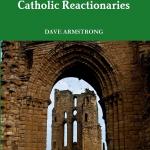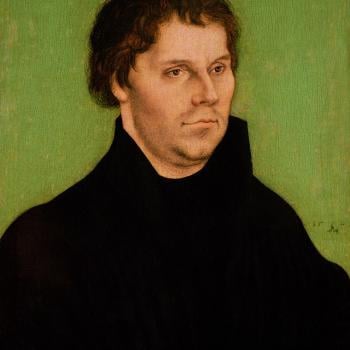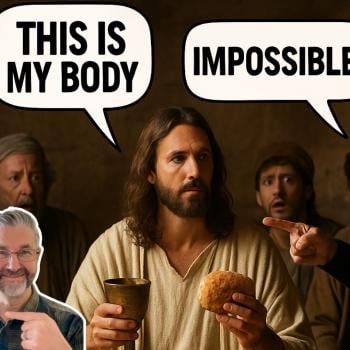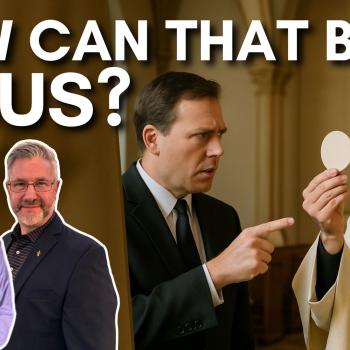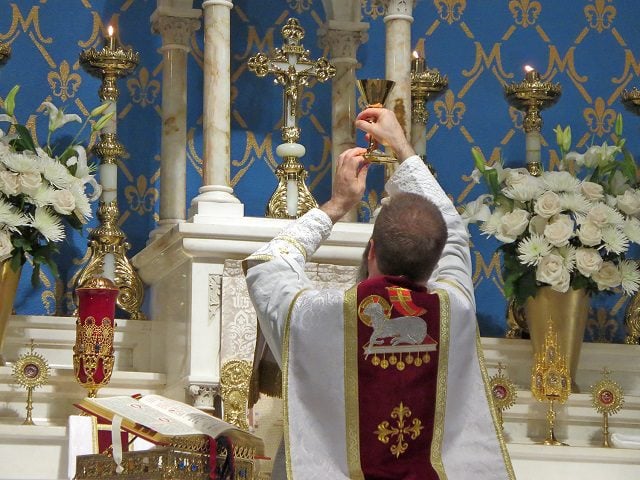
Pope Francis issued on 16 July 2021 the Apostolic Letter Issued “Motu proprio” entitled Traditionis Custodes. He also issued an explanatory letter to the bishops, to accompany this document. The latter is of extreme importance for understanding the motivations of the former.
A Motu proprio document is of relatively lesser authority than other papal documents. The old Catholic Encyclopedia (1910) explained that this sort of document “decided on by the pope personally, that is, not on the advice of the cardinals or others, but for reasons which he himself deemed sufficient.
For this reason, it can sometimes “reverse” similar proclamations from previous popes, because each pope has the supreme power to issue a Motu proprio proclamation. In other words, they usually don’t deal with subject matter that partakes of the nature of infallibility.
Before I begin to cite the document and accompanying letter, let me summarize what I think is the essence of the matter:
1) Traditionalists and the much more extreme group of radical Catholic reactionaries — since the reform of the Mass at Vatican II in 1965 –, desired a wider availability of the older Tridentine Mass.
2) Pope St. John Paul II and Pope Benedict granted this wider availability and access, for the express purpose of fulfilling such legitimate desires. “Worship and let worship” seemed to be the guiding spirit for these actions.
3) Pope Benedict XVI in particular, made a major effort along these lines in his document Summorum Pontificum and its accompanying letter in 2007.
4) Pope Benedict’s vision was that both forms were variants of the one Roman Rite. Catholics were not to look down their noses at other Catholics who chose to worship differently and to follow another liturgical “model” so to speak. His actions and those of his saintly predecessor always presupposed that such freedom was not to be exploited for the sake of division, felt superiority, and condemnation of the Mass of Pope St. Paul VI (the so-called “New Mass”).
5) But in fact (as has been determined by a study undertaken by the bishops), this extended freedom of worship has indeed resulted in too many people adopting a quasi-schismatic attitude, in which they condemn the Mass of Pope St. Paul VI (what Pope Benedict called the “ordinary form Mass”) and considered it objectively inferior to the extraordinary form Mass (Tridentine or “Old” Mass), and in extreme cases, even an invalid form.
6) In light of such increasing division and what one might call “elitism” or “rigorism” Pope Francis, following the study undertaken (i.e., not acting merely unilaterally), has decided that many people have “exploited” this freedom of worship, leading to unwanted and sinful division in the Church, including a denigration of or outright rejection of the sublime magisterial authority of the Second Vatican Council.
7) Therefore, Pope Francis desires a tightened regulation of the use of the Tridentine Mass (not a prohibition!), in order to avoid these excesses and undesirable secondary outcomes, for the sake of Church unity.
Before continuing, let me reiterate my own inclinations along these lines: lest I be accused of bias (as I invariably am, anyway, whenever I defend anything that Pope Francis does):
1) I have always been in favor of a wider availability of the Tridentine Mass, from the time of my being received into the Catholic Church in February 1991. In fact, I visited Windsor, Canada, across the river from Detroit, shortly after my conversion, to attend one such Mass before it was available in the archdiocese of Detroit.
2) I detest any and all liturgical abuses, period.
3) I was a member of St. Joseph parish in Detroit, from 1991-2016. It offered a very reverent “Novus Ordo Latin Mass” and was one of the very few (maybe three or four) parishes in Detroit to do so. This is my own personal liturgical preference (but alas, now it is virtually nonexistent, and “betwixt and between”). Eventually, a sister parish in our new three-parish cluster offered the Tridentine / extraordinary form Mass. And now St. Joseph is part of Institute of Christ the King Sovereign Priest and offers exclusively extraordinary form Masses. I fully expect it to continue to do so (assuming the parish has not been infused with reactionaryism “on the ground”). I have since moved 65 miles away and attend a different parish.
4) I enthusiastically welcomed Pope Benedict’s Summorum Pontificum in 2007, since I already was of the opinion that it expressed, and I have defended it ever since, against reactionaries like, for example, Peter Kwasniewski (one who also excoriates Vatican II), who was of the opinion that the Pauline Mass was objectively inferior: expressly against Pope Benedict’s expressed opinion.
5) At the same time, as an apologist and “sociological observer” of traditionalism and reactionaryism for some 25 years, I was well aware that there were strong reactionary trends of thought within the extraordinary form / Old Latin Mass community that were “anti-ordinary form” and “anti-Vatican II” as well as also being “anti-Pope Francis” (even anti-Pope Benedict more and more). Some people (I have no idea what percentage) simply prefer the older Mass and don’t get into this. These I consider legitimate “traditionalists.” But others (again, I have no idea what percentage, but it’s surely a troubling number) take an exclusivistic / oppositional approach and oppose the Pauline Mass, Vatican II, and popes since 1958.
6) These latter trends have apparently become alarming enough to cause Pope Francis to tighten up restrictions for the sake of the unity of the Church, and I think he is right to do so, though he will be massively misunderstood and second-guessed and bashed, as he always is.
The only indications I can see as to the motives and rationale of issuing Traditiones Custodes at this time, in the document itself, are two references to “unity” of the Church in the first two paragraphs and Art. 3 § 1. which had to do with determining whether “groups that celebrate according to the Missal antecedent to the reform of 1970” (Art. 3, introduction) “do not deny the validity and the legitimacy of the liturgical reform, dictated by Vatican Council II and the Magisterium of the Supreme Pontiffs;” that is, that they don’t attack the Pauline Mass, which has been repeatedly upheld by Vatican II and popes subsequent to Pope St. Paul VI.
I can amply testify, myself (as a very active professional Catholic apologist) that this flaw in thinking and behavior is endemic within the reactionary Catholic community, which of course, is completely devoted to the Tridentine Mass. I myself have encountered and refuted this attitude and mentality scores of times. I won’t bother citing all those posts of mine. They can be seen on my Radical Catholic Reactionaries vs. Catholic Traditionalism web page. It undeniably exists; there is no question whatever about it, and it exists in significantly troubling numbers for myself as an apologist to have to repeatedly deal with it.
The only dispute is whether the problem was bad enough to justify a “clamping down” on the relatively free availability of the extraordinary form Mass. Pope Francis thought it was serious enough of a problem; so did the bishops. His critics won’t accept their judgment no matter what (and that will be obvious in the days to come). And this is part and parcel of the problem: the reactionaries have an intrinsically flawed, Protestant-like and theologically liberal Catholic-like notion of Catholic authority. This mentality is not good for the Church or for Church unity.
Now I’d like to cite and comment upon the pope’s own reasoning from his accompanying letter. He lays it all out very straightforwardly. There is no “ambiguity” here or anything of the sort. It’s clear as a pure mountain stream. First he praises the motives and actions of his two predecessors:
Most people understand the motives that prompted St. John Paul II and Benedict XVI to allow the use of the Roman Missal, promulgated by St. Pius V and edited by St. John XXIII in 1962, for the Eucharistic Sacrifice. The faculty — granted by the indult of the Congregation for Divine Worship in 1984 [2] and confirmed by St. John Paul II in the Motu Proprio Ecclesia Dei in 1988 [3] — was above all motivated by the desire to foster the healing of the schism with the movement of Mons. Lefebvre. With the ecclesial intention of restoring the unity of the Church, the Bishops were thus asked to accept with generosity the “just aspirations” of the faithful who requested the use of that Missal.
Amen; exactly right. This is an example of two popes seeking to “accept” the “just aspirations” of those who prefer the Old Mass. But being granted more freedom also comes with responsibility on the party of laymen. It’s not a one-way thing. Those who preferred one liturgical form more did not have the freedom to run down ecumenical councils and popes, because those are unCatholic and quasi-schismatic things to do.
It comforted Benedict XVI in his discernment that many desired “to find the form of the sacred Liturgy dear to them,” “clearly accepted the binding character of Vatican Council II and were faithful to the Pope and to the Bishops”. [9] What is more, he declared to be unfounded the fear of division in parish communities, because “the two forms of the use of the Roman Rite would enrich one another”. [10] Thus, he invited the Bishops to set aside their doubts and fears, and to welcome the norms, “attentive that everything would proceed in peace and serenity,” with the promise that “it would be possible to find resolutions” in the event that “serious difficulties came to light” in the implementation of the norms “once the Motu proprio came into effect”. [11]
Pope Benedict XVI didn’t think there would be problems of implementation or divisions fostered. He thought the opposite. So did I and many others who preferred traditional liturgy, with the same hope at the time. But in fact it hasn’t worked out that way. Serious problems did develop: precisely along the lines of what Pope Francis is concerned about: divisiveness, contentiousness, disunity, and an oppositional “either-or” mindset.
Again, it isn’t said how many or what percentage were thought to have these attitudes. But it’s sufficiently serious enough to take action. I attest as an apologist and observer and critic of these movements (and even a participant in them to a great degree) that the views under consideration are rampant and alarming. I deal with them all the time. In other words, this is not merely a false or exaggerated perception on the part of the pope and the bishops.
With the passage of thirteen years, I instructed the Congregation for the Doctrine of the Faith to circulate a questionnaire to the Bishops regarding the implementation of the Motu proprio Summorum Pontificum. The responses reveal a situation that preoccupies and saddens me, and persuades me of the need to intervene. Regrettably, the pastoral objective of my Predecessors, who had intended “to do everything possible to ensure that all those who truly possessed the desire for unity would find it possible to remain in this unity or to rediscover it anew”, [12] has often been seriously disregarded. An opportunity offered by St. John Paul II and, with even greater magnanimity, by Benedict XVI, intended to recover the unity of an ecclesial body with diverse liturgical sensibilities, was exploited to widen the gaps, reinforce the divergences, and encourage disagreements that injure the Church, block her path, and expose her to the peril of division.
This is the problem and why he decided to act: in a nutshell.
At the same time, I am saddened by abuses in the celebration of the liturgy on all sides. In common with Benedict XVI, I deplore the fact that “in many places the prescriptions of the new Missal are not observed in celebration, but indeed come to be interpreted as an authorization for or even a requirement of creativity, which leads to almost unbearable distortions”. [13] But I am nonetheless saddened that the instrumental use of Missale Romanum of 1962 is often characterized by a rejection not only of the liturgical reform, but of the Vatican Council II itself, claiming, with unfounded and unsustainable assertions, that it betrayed the Tradition and the “true Church”. . . .
I ask you to be vigilant in ensuring that every liturgy be celebrated with decorum and fidelity to the liturgical books promulgated after Vatican Council II, without the eccentricities that can easily degenerate into abuses. Seminarians and new priests should be formed in the faithful observance of the prescriptions of the Missal and liturgical books, in which is reflected the liturgical reform willed by Vatican Council II.
All liturgical abuse is bad. That’s not the reason for this action, which was taken because an ecumenical council was being denigrated. Let no one doubt that this has taken place. I can prove it with massive documentation just from my own writings that opposed instances of it (all to no avail, of course). It’s precisely because corrections and rebukes from priests, catechists, apologists, etc., are of little or no effect, that the Church has to sometimes act in the authority of her magisterium. If folks of a certain mindset won’t even listen to the Catholic magisterium, they certainly won’t heed the warnings and corrections of a lowly lay apologist like myself!
To doubt the Council is to doubt the intentions of those very Fathers who exercised their collegial power in a solemn manner cum Petro et sub Petro in an ecumenical council, [14] and, in the final analysis, to doubt the Holy Spirit himself who guides the Church.
That’s Catholicism; that’s how it works, but many people today, on the ecclesiastical right and left, deny it.
A final reason for my decision is this: ever more plain in the words and attitudes of many is the close connection between the choice of celebrations according to the liturgical books prior to Vatican Council II and the rejection of the Church and her institutions in the name of what is called the “true Church.” One is dealing here with comportment that contradicts communion and nurtures the divisive tendency — “I belong to Paul; I belong instead to Apollo; I belong to Cephas; I belong to Christ” — against which the Apostle Paul so vigorously reacted.
This encapsulates his motivations for issuing this Motu proprio: now in two sentences. Division and disunity and factionalism; a party spirit, are bad things.
Responding to your requests, I take the firm decision to abrogate all the norms, instructions, permissions and customs that precede the present Motu proprio, and declare that the liturgical books promulgated by the saintly Pontiffs Paul VI and John Paul II, in conformity with the decrees of Vatican Council II, constitute the unique expression of the lex orandi of the Roman Rite.
Note that the bishops requested the action. This letter is to them.
***
Related Reading
Infallibility, Councils, and Levels of Church Authority: Explanation of the Subtleties of Church Teaching and Debate with Several Radical Catholic Reactionaries [7-30-99; terminology updated, and a few minor changes made on 7-31-18]
Cdl Ratzinger (Pope Benedict XVI): Vatican II Authority = Trent [5-20-05]
“New” / Ordinary Form / Pauline Mass: a Traditional Defense (with Massive Historical Documentation, + Summary of Vatican II on Liturgical Reform) [6-18-08]
Reactionary & Traditionalist Reaction to Summorum Pontificum [6-23-08]
Michael Voris vs. the New (OF) Mass & Pope Benedict XVI [11-16-12]
Books by Dave Armstrong: Mass Movements: Radical Catholic Reactionaries, the New Mass, and Ecumenism [12-20-12]
Death of the Reform of the Reform of the Liturgy? (The Reports are Greatly Exaggerated: Dr. Peter Kwasniewski & Fr. Thomas Kocik vs. Pope Benedict XVI?) [+ Part Two] [2-24-14]
Who’s Defending Pope Benedict’s Summorum Pontificum Now? [2-26-14]
You Prefer the Tridentine / EF Mass? Great! You Prefer Novus Ordo / OF (like me)? Great! [8-14-15]
Critique of Criticisms of the New Mass [11-5-15]
Worshiping the TLM vs. Worshiping God Through It [12-16-15]
Ratzinger “Banal” Quote: Traditionalist & Reactionary Misuse (Regarding the Ordinary Form Mass) [12-17-15]
Chris Ferrara vs. Pope Benedict XVI (New Mass) [12-18-15]
Douthat’s Pope-Bashing Book Attacks Vatican II [3-24-18]
Catholic (?) Vatican II-Bashing: Cutting Thru the Crap [4-25-19]
Is VCII’s Nostra Aetate “Religiously Pluralistic” & Indifferentist? [6-7-19]
Reactionary Louie Verrecchio’s Three Lies About Vatican II [6-19-19]
Defense of Vatican II (vs. Paolo Pasqualucci): Master List (12 Defenses) [7-23-19]
Bishops Viganò & Schneider Reject Authority of Vatican II [11-22-19]
Phil Lawler vs. Vatican II? (“Troublesome” / “Ambiguities”) [5-5-20]
Anti-Francis = Anti-Vatican II (You Heard it Here First) [7-16-20]
Skojec Loathes Traditionis; Illustrates Why it is Necessary [7-19-21]
Traditionalist Fr. Chad Ripperger Critiques Traditionalism [7-21-21]
Articles from Others
Traditionis Custodes: The Council and the Roman Rite (Adam Rasmussen, Where Peter Is, 7-16-21)
Traditionis Custodes: In the Hope of Liturgical Reform (Daniel Amiri, Where Peter Is, 7-17-21)
Et Cum Spiritu NoNo–The Demise of the Traditional Latin Mass Experiment (Monsignor Eric Barr, Thin Places, 7-17-21)
Roundup of Major Reactions to Traditionis Custodes (Peter Kwasniewski, New Liturgical Movement, 7-19-21)
Pope Francis’s Changes to the Latin Mass (Catholic Answers, 7-20-21)
Photo credit: Solemn High Mass for the Feast of the Ascension (2015) in the Extraordinary Form at Mater Dei Latin Mass Parish, Irving, Texas (FSSP). [Flickr / CC BY-NC-ND 2.0 license]
***
Summary: Pope Francis issued the Motu Proprio Traditionis Custodes on 7-16-21 in order to foster Church unity & to work against the harmful tendencies of opposition to the New Mass & Vatican II.



